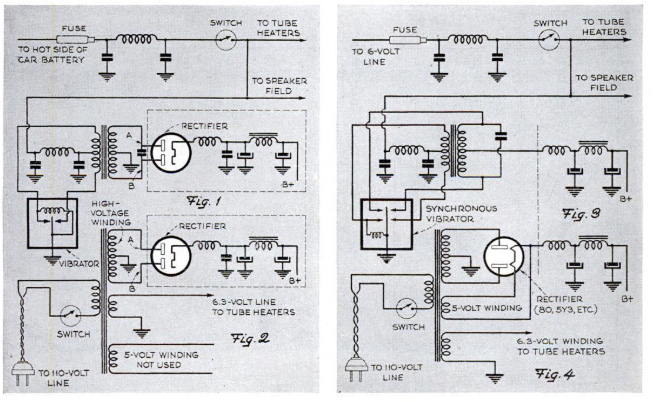 During World War II, one recurring theme in radio and handyman magazines was bringing the radio from the car inside the house. There were two practical reasons for doing this: First, no new radios were being manufactured, so if you needed another one in the house, you had to use some ingenuity. Second, the radio wasn’t doing much good in the car, anyway, due to gas and rubber rationing.
During World War II, one recurring theme in radio and handyman magazines was bringing the radio from the car inside the house. There were two practical reasons for doing this: First, no new radios were being manufactured, so if you needed another one in the house, you had to use some ingenuity. Second, the radio wasn’t doing much good in the car, anyway, due to gas and rubber rationing.
The January 1945 issue of Popular Science contains some pointers for doing the job. The radio probably used 6 volts for the tube filaments, and a higher voltage for the B+. The high voltage came from a vibrator power supply. The mechanical vibrator changed the car’s 6 volts from DC to AC, which was fed into a transformer to increase the voltage. The radio had a rectifier tube to change it back to the DC required by the circuit. To do the conversion, you needed a transformer that changed the 120 volt household current into 6 volts, with another winding of about 120 volts. This replaced the radio’s vibrator and transformer, and the set’s existing rectifier was used. The wiring for two common circuits is shown below.
For an antenna, the article pointed out that about 20 inches of wire would do a good job, since this is about the length of antenna the set was designed for.


In the 1950s there were “beach radios” in some cars which you could pull out of the dash and take to the beach. Of course, because they were easily detachable, the obvious thing happened to them.